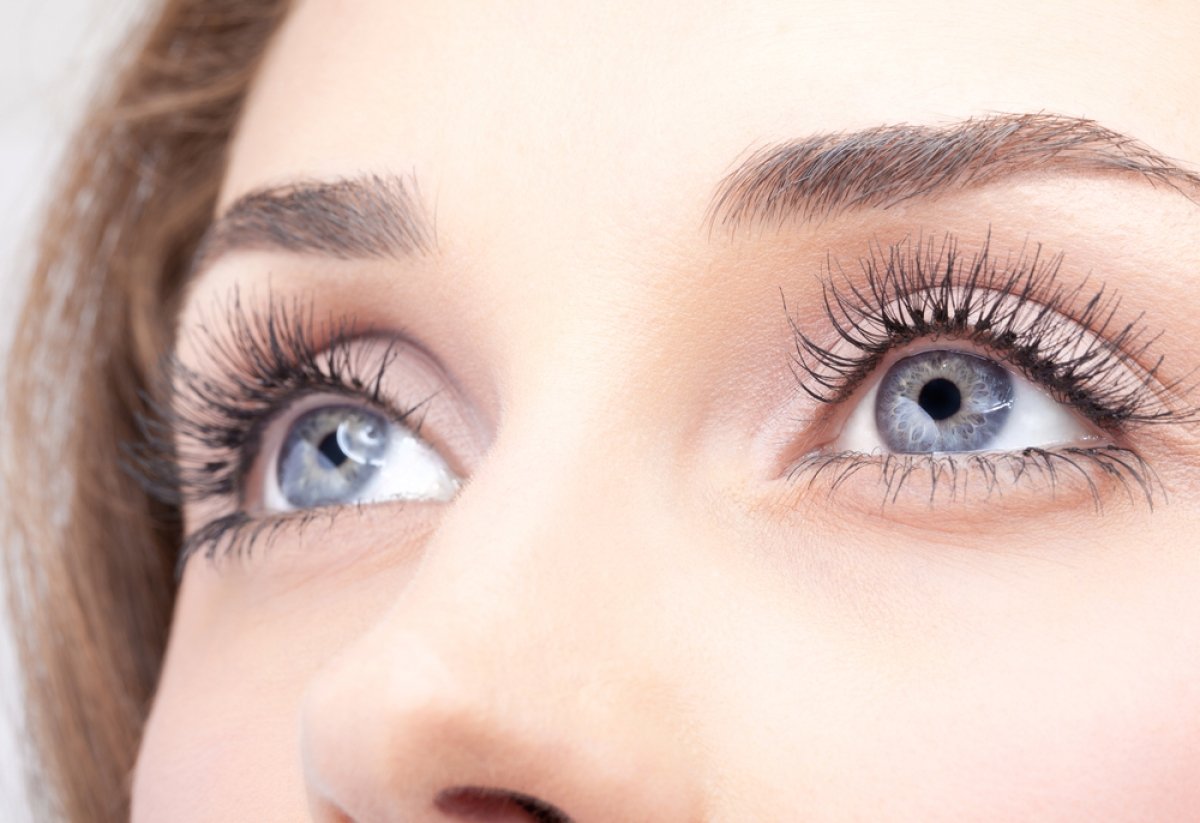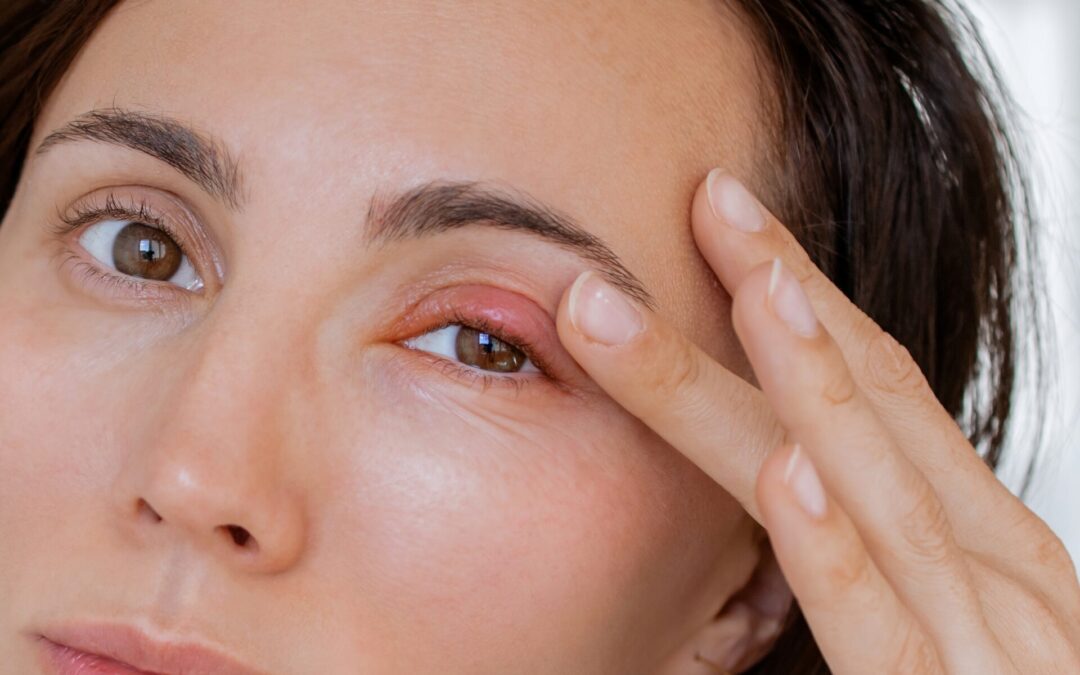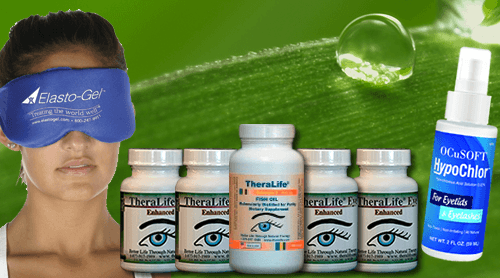To effectively manage chalazions using TheraLife’s products, start by selecting the right product based on your needs. TheraLife offers natural solutions that focus on reducing inflammation and promoting eye health. Apply their recommended eye care products carefully, ensuring to avoid contact with the eyes. Enhance the treatment by incorporating warm compresses for 5 to 15 minutes to encourage drainage. TheraLife emphasizes the importance of maintaining strict lid hygiene to prevent cross-contamination and suggests regular monitoring for any side effects. Their products should be stored correctly, away from moisture, and used consistently as directed. For improved outcomes, TheraLife recommends combining their treatments with practices like lid scrubs. By integrating these strategies, TheraLife helps customers gain valuable insights into effective chalazion management.
Get Rid Of Chalazion Recurrence- Treat Dry Eyes With TheraLIfe

TheraLIfe Eye, warm compress – Chalazion Symptoms/ Blepharitis treatment winning combination that works.
Key Takeaways
- Apply a thin layer of ointment using a cotton-tipped applicator, avoiding eyes and sensitive areas.
- Use warm compresses 4 to 6 times daily to enhance ointment efficacy and aid drainage.
- Maintain proper hygiene by washing hands and using sterile tools to prevent cross-contamination.
- Monitor for side effects, and adjust treatment under professional guidance if symptoms worsen.
- Store ointments in a cool, dry place, checking expiration dates regularly for safety.
Choose the Right Ointment
When selecting the right antibiotic ointment for chalazions, it’s crucial to take into account the specific circumstances of the condition. Ointment selection hinges on the presence of infection or severe inflammation. Regular eyelid hygiene can prevent flare-ups, and recurring chalazions may require treatment of underlying conditions. Chloramphenicol, available over-the-counter, is suitable for superficial infections. Prescription options like penicillin and doxycycline target more severe bacterial infections. For cases involving inflammation, tobramycin combined with dexamethasone enhances treatment effectiveness through anti-inflammatory properties. Remember, antibiotics aren’t typically necessary unless infection is evident. Most chalazia respond well to non-antibiotic treatments like hot compresses, which can be used in conjunction with ointments for enhanced results. Assess each case individually, considering factors such as infection presence and inflammation severity, to guarantee ideal treatment outcomes. It’s important to monitor the size and symptoms of chalazia regularly to prevent complications and ensure timely intervention.
Follow Doctor’s Directions
Patient education is essential to confirm you understand the correct use of antibiotic ointment. Apply it as prescribed, typically after a warm compress, which enhances medication penetration. Chalazion is a red, swollen bump on the eyelid that forms when a meibomian gland becomes blocked. Use a cotton swab to gently apply the ointment to the affected area, avoiding contact with the eye. Medication adherence is critical; follow the recommended frequency and duration to prevent infection, especially post-surgery. In surgical aftercare, antibiotic ointment helps minimize infection risk. Monitor for infection signs and report any issues promptly. Regular eyelid hygiene and the use of Bruder masks can help maintain oil gland function and prevent styes.
Apply Warm Compresses First
Before applying antibiotic ointment, begin with warm compresses to improve treatment efficacy for chalazions. Employing warm compresses techniques involves heating a wet towel in the microwave or using heated eye masks containing beads. You can also try placing rice in a sock or utilize commercial products like a Bruder Mask. Apply these compresses 4 to 6 times daily for 5 to 15 minutes each session. The warm compresses benefits include softening the oil within the clogged gland, facilitating drainage, reducing inflammation, and aiding in the shrinkage of the bump. Afterward, gently massage the area to further promote drainage. Confirm the compress is warm, not hot, to prevent skin damage, and avoid sharing materials to reduce bacterial spread. Consistent use of warm compresses helps in preventing infection during treatment. Typically, chalazia shrink within 3-4 weeks with consistent home treatment.
Maintain Proper Hygiene
To effectively reduce the risk of chalazion recurrence, make certain you perform regular lid cleansing with a mild, tear-free solution. Use only clean compresses and avoid cross-contamination by not sharing towels or eye products. Consistently practicing these hygiene measures can greatly decrease bacterial load and prevent future issues. Regular application of topical antibiotics may also be used to prevent secondary infections. Incorporating warm compress techniques into your routine can help in softening and draining chalazia effectively.
Regular Lid Cleansing
Although often overlooked, regular lid cleansing is essential for maintaining proper hygiene and preventing eye conditions like chalazions and blepharitis. Implement daily cleansing techniques to guarantee peak eyelid health. Use gentle cleansers, such as baby shampoo or optometrist-recommended commercial lid scrubs, mixed with warm water. Apply this solution with a clean washcloth, gently scrubbing the eyelashes and eyelid margins to remove debris and bacteria. Rinse thoroughly with cool water, and repeat the process for the other eye. This routine not only maintains hygiene but also minimizes the risk of bacterial infections. Additionally, wash your face daily to eliminate dirt and makeup, and practice regular hand washing to avoid transferring pathogens to your eyes. These consistent practices support effective lid hygiene. Early diagnosis of conditions like blepharitis is essential for effective management, promoting proactive eye care. Consistent use of warm compresses improves meibomian gland function, aiding in the management of conditions like blepharitis and chalazions.
Use Clean Compresses
Regular lid cleansing sets the foundation for eyelid health, and incorporating clean compresses further enhances it by providing symptomatic relief from chalazions. Compress benefits include reducing inflammation and promoting drainage through warm application. Chalazia occur due to the blockage of meibomian glands, which can be alleviated by using warm compresses to liquify the oil. To prepare, choose clean, soft cloths or commercially available heat masks like Bruder Mask. Heat water until warm—boiling and cooling slightly guarantees ideal temperature. Dip the cloth, wring excess moisture, and apply it to both eyelids for 10 to 15 minutes, making sure warmth and moisture are maintained. Regular monitoring for signs of irritation or infection can help ensure effective treatment and prevent further complications. Repeat 4 to 6 times daily. Always wash hands before preparation and application to avoid contamination. Use fresh or thoroughly cleaned washcloths each time, making certain materials are sterile, safe, and soft to prevent irritation.
Avoid Cross-Contamination
Effective management of chalazions involves strict adherence to hygiene protocols to prevent cross-contamination.
Cross contamination risks arise from improper application techniques and lack of cleanliness. Begin by thoroughly washing your hands with soap and water. It is essential to follow application guidelines closely to ensure optimal results. Verify the affected eyelid is clean and dry before applying the antibiotic ointment. Use sterile cotton swabs or cloths for application to avoid spreading bacteria. Consistent use of warm compresses can enhance the treatment process by promoting drainage and reducing inflammation. Never share ointment containers to mitigate cross contamination risks, and dispose of used materials responsibly.
Apply a thin layer of ointment as directed, avoiding eyes and sensitive areas.
After application, wash your hands again and clean or discard any tools used.
Proper application and hygiene are vital in managing chalazions effectively, reducing the potential for infections.
Monitor for Side Effects
When using antibiotic ointment for chalazions, it’s critical to monitor for side effects to confirm your treatment remains safe and effective. Effective side effect management involves recognizing and addressing symptoms like eye irritation, redness, or a burning sensation. Be vigilant for allergic reactions, which may manifest as hives, skin rash, or dizziness. Avoid squeezing or opening styes/chalazia to prevent worsening of the condition. Serious side effects, such as difficulty breathing, facial swelling, or chest tightness, require immediate medical attention. If you experience worsening eye discharge or increased sensitivity to light, consult your healthcare provider promptly. Regularly manage blepharitis to reduce the risk of stye formation and recurrence. Maintain detailed records of any adverse reactions and report severe cases to the FDA or relevant health authority. Don’t stop using the medication without professional advice to confirm the best therapeutic outcome.
Avoid Eye Contact
Monitoring for side effects confirms the safety of antibiotic ointment use, but avoiding direct eye contact is equally important for effective treatment. Adhering to proper application techniques guarantees eye safety. Apply ointment precisely to the region between the eyelashes and the back of the eyelid using a cotton-tipped applicator. Avoid contact with the eye surface to prevent irritation or potential contamination. Limit application to the affected area, using minimal ointment to avoid spreading. Warm compresses are an effective first-line treatment for chalazion, promoting healing and enhancing the effectiveness of other treatments. Keep your eye closed during application and gently clean any excess with a cloth. This method minimizes contamination risk and enhances treatment effectiveness. Always follow your healthcare provider’s instructions for best results. It is important to note that a chalazion typically presents as a painless eyelid swelling, distinguishing it from other eyelid conditions that might require different treatment approaches.
Store Ointment Properly
Proper storage of antibiotic ointments is essential to maintain their efficacy. Confirm you store your ointment in a cool, dry place, adhering to the specific temperature guidelines: NEOSPORIN and POLYSPORIN require 68°F to 77°F, Bacitracin needs 59°F to 86°F, and Triple Antibiotic Ointment should remain at 68°-77°F. Protect your ointments from light exposure by utilizing opaque storage containers and keeping them away from sunlight. Always check the ointment expiration date and confirm the packaging is intact. Use the original packaging to avoid mix-ups and maintain product integrity. If transferring ointment, label the new storage container clearly. Keep ointments out of children’s and pets’ reach, and avoid moisture-prone areas like bathrooms. When treating a chalazion, it’s important to note that conservative treatments such as the use of antibiotic ointments typically have lower resolution rates compared to other methods like injection or surgery. A chalazion often results from a blockage in the meibomian glands, leading to eyelid swelling and requiring attentive care.
Use Consistently
Storing your antibiotic ointment correctly guarantees its efficacy, but consistent application plays a significant role in treating chalazions.
Apply the ointment four times daily, particularly if the chalazion is infected, and employ proper application techniques to guarantee maximum absorption.
If you’re dealing with significant redness and swelling, consider using chloramphenicol 1% ointment. Consistent application over 5 to 14 days is essential for reducing inflammation and preventing infection.
Adjust application frequency based on symptom severity and under your healthcare provider’s guidance. Regular monitoring will help determine if changes to your regimen are necessary.
Treatment duration might extend for recurrent or persistent cases, so it’s important to adhere to the prescribed course and report any changes to your healthcare provider.
Combine With Lid Scrubs
When managing chalazions, combining antibiotic ointment with lid scrubs can enhance treatment efficacy.
Lid scrubs offer significant benefits, such as maintaining eyelid hygiene and preventing chalazia. Using baby shampoo or commercially prepared scrubs, you can integrate this simple yet effective measure into your routine.
Studies indicate that combined therapies, including lid hygiene, can improve outcomes with a 58% cure rate when paired with antibiotic ointment and hot compresses.
Here’s how to optimize your treatment:
- Choose the Right Scrub: Use baby shampoo or commercially available lid scrub products.
- Frequency: Perform lid scrubs daily to maximize benefits.
- Consistency: Combine with antibiotic ointment and hot compresses regularly.
- Seek Recurrence Prevention: Incorporate lid scrubs to prevent future chalazia.
Seek Medical Advice If Needed
If a chalazion doesn’t respond to home treatments or frequently recurs, seeking medical advice is crucial for effective management.
Persistent chalazion symptoms, such as eyelid redness, swelling, or vision impact, necessitate prompt consultation with an eye care specialist. Medical evaluation provides a precise diagnosis and explores extensive treatment options beyond home remedies.
For chalazia that persist beyond 4-6 weeks or frequently recur, a specialist can identify underlying causes, such as meibomian gland dysfunction, and recommend targeted interventions.
Ignoring symptoms can lead to complications like infection, requiring antibiotics or even surgical intervention.
Professional monitoring guarantees you receive appropriate care to prevent recurrence and avoid visual impairment, emphasizing the importance of timely medical advice for ideal chalazion management.
Frequently Asked Questions
Can Chalazions Heal Without Antibiotic Ointment?
You’re wondering if chalazions can heal without antibiotic ointment. They can, as the healing process often occurs naturally without antibiotics since chalazia are generally not infections.
Your chalazion treatment should include warm compresses to facilitate drainage and reduce discomfort. Massage the cyst gently after applying heat to promote healing.
Most chalazia resolve within a month, but persistent ones may require medical interventions like steroid injections or minor surgery under local anesthesia.
What Are Alternatives to Antibiotic Ointment for Chalazions?
You can explore alternatives to antibiotic ointment for chalazions by trying home remedies such as warm compresses.
Apply a warm compress for 10-15 minutes, 4-6 times daily to soften the lump and promote drainage. Evidence suggests that consistent use of warm compresses can reduce inflammation and aid healing.
Incorporate eyelid hygiene with a mild cleanser and consider lifestyle changes like dietary adjustments to maintain eye health and prevent recurrence.
How Do I Know if a Chalazion Is Infected?
You notice your chalazion’s redness and swelling increase coincidentally with pain and tenderness, indicating infection signs.
Symptom identification includes visible discharge or pus and warmth on touch.
If redness spreads beyond the eyelid, it could signify preseptal cellulitis.
Systemic signs like fever may also emerge.
These evidence-based indicators suggest an infection, requiring prompt attention to prevent complications such as tissue damage or potential vision impact due to enlargement.
Are There Natural Remedies for Treating Chalazions?
When you’re exploring natural treatments for chalazions, consider herbal remedies like warm compresses and eyelid massages. These methods promote drainage and reduce inflammation.
Aloe vera gel and chamomile compresses can soothe and decrease swelling. Tea tree oil, with a carrier oil, and coconut oil offer anti-inflammatory benefits, though evidence is limited.
Regularly use these natural approaches to encourage healing while maintaining good eyelid hygiene. Always consult a healthcare professional before trying new treatments.
How Long Does a Chalazion Take to Heal Naturally?
Have you ever considered the natural recovery of a chalazion?
Typically, the healing timeline varies from a few weeks to several months, depending on factors like size and individual healing response.
Smaller chalazia might resolve within a week or two, while larger ones can linger longer.
Your body’s immune activity, early interventions like warm compresses, and avoiding irritants play essential roles in speeding up the process.
Always monitor for signs of improvement.
Conclusion
To effectively manage chalazions, Theralife’s products can offer significant benefits to their customers. Approximately 60% of chalazions resolve with proper home care and topical treatments within a month. Theralife provides a range of products designed to enhance eye health and potentially speed up recovery with their natural formulations. By selecting Theralife’s recommended products, adhering to usage instructions, and maintaining good hygiene, customers can improve their chances of success. Regular use, complemented by warm compresses and lid scrubs, can greatly aid in recovery. Theralife’s commitment to quality and efficacy ensures that users receive optimal care for their eye conditions.




